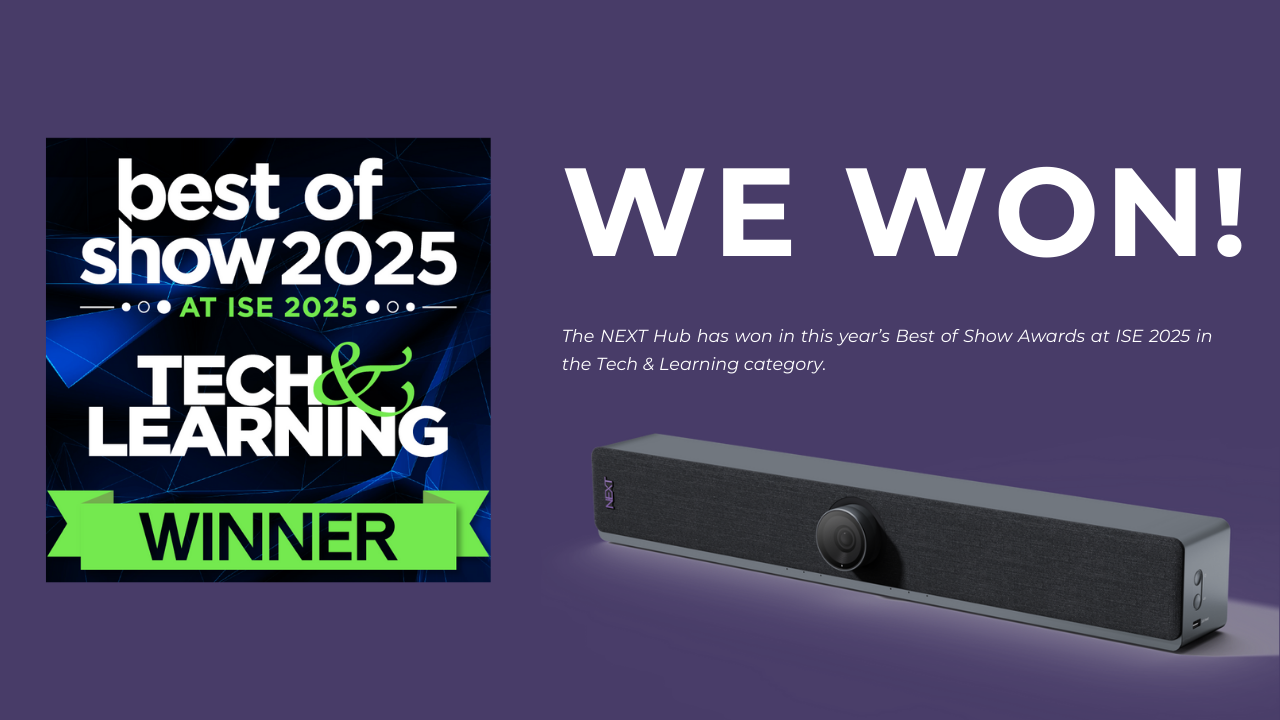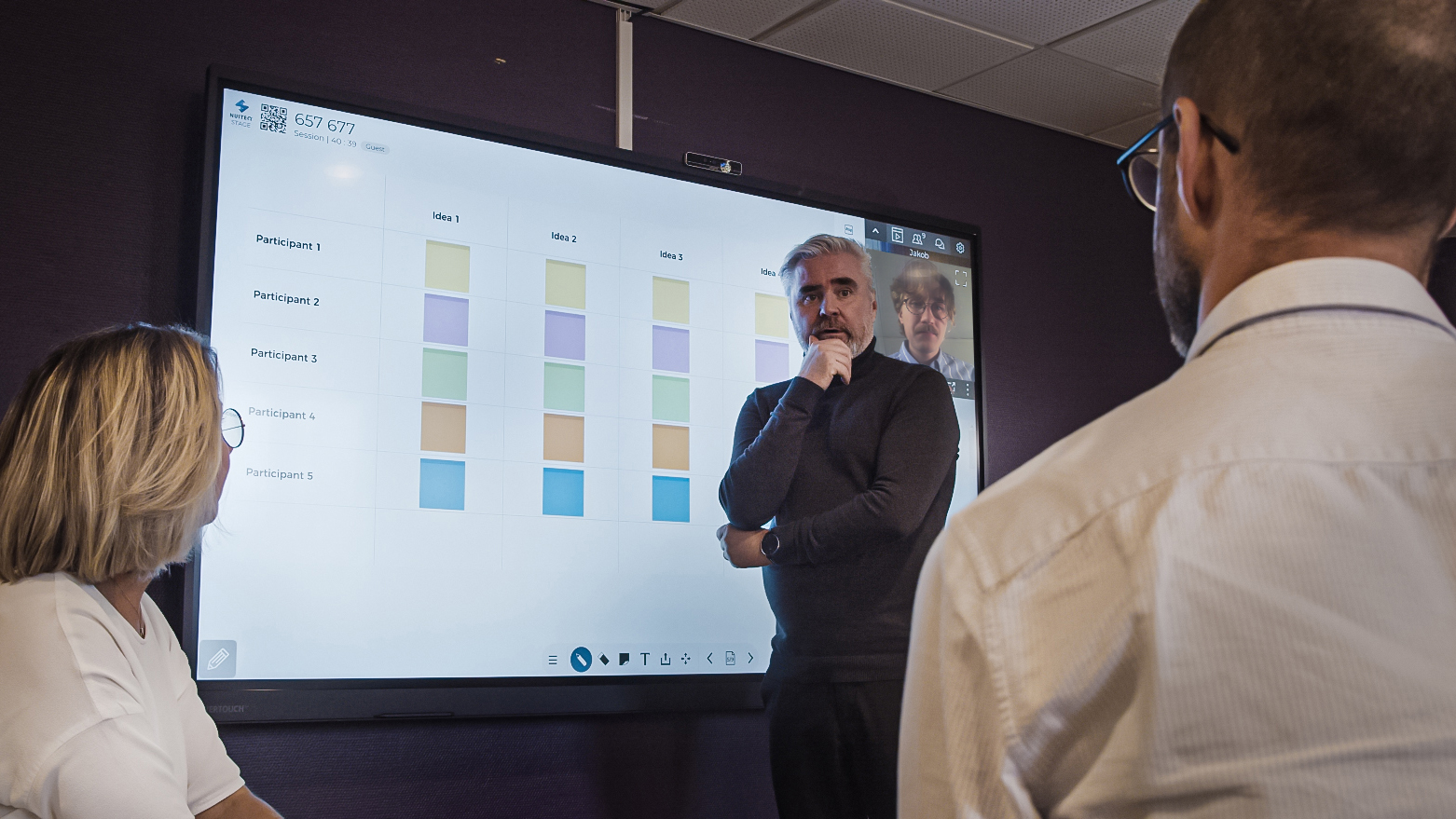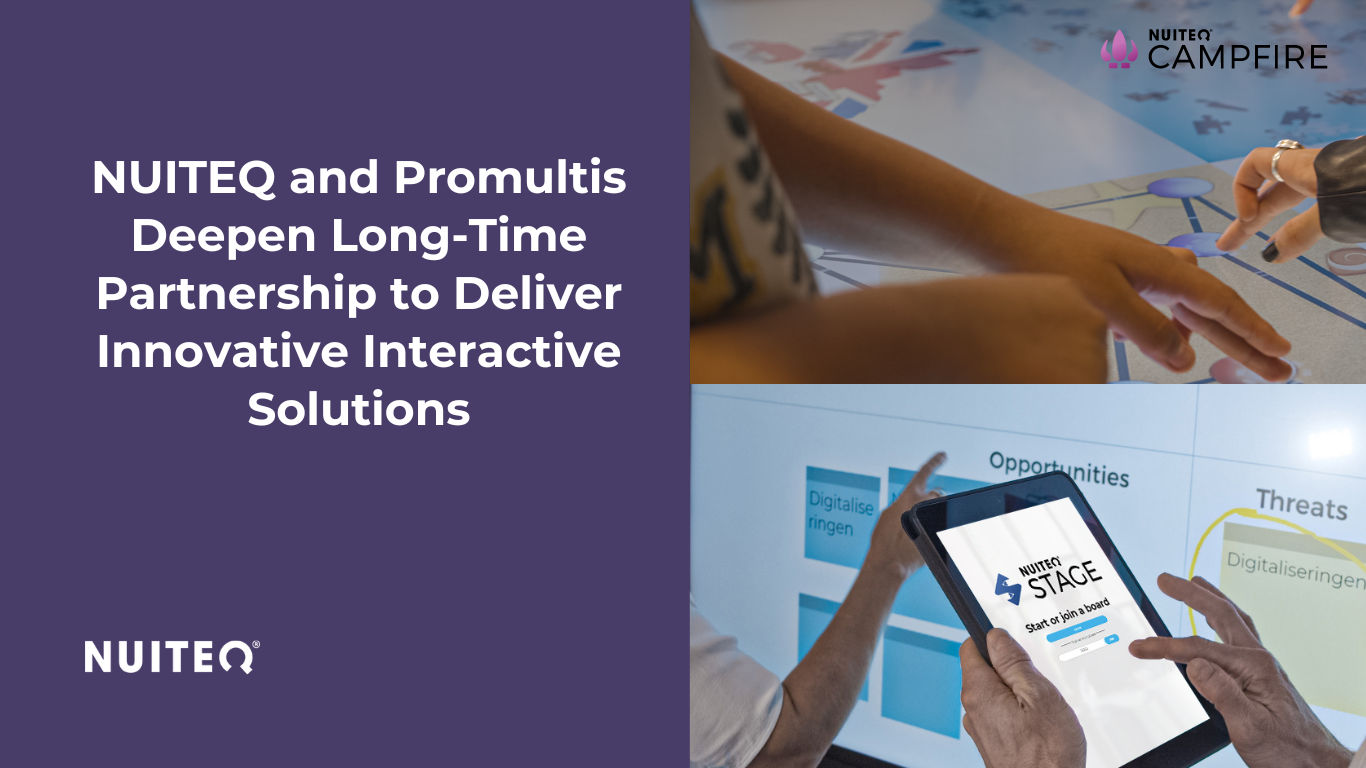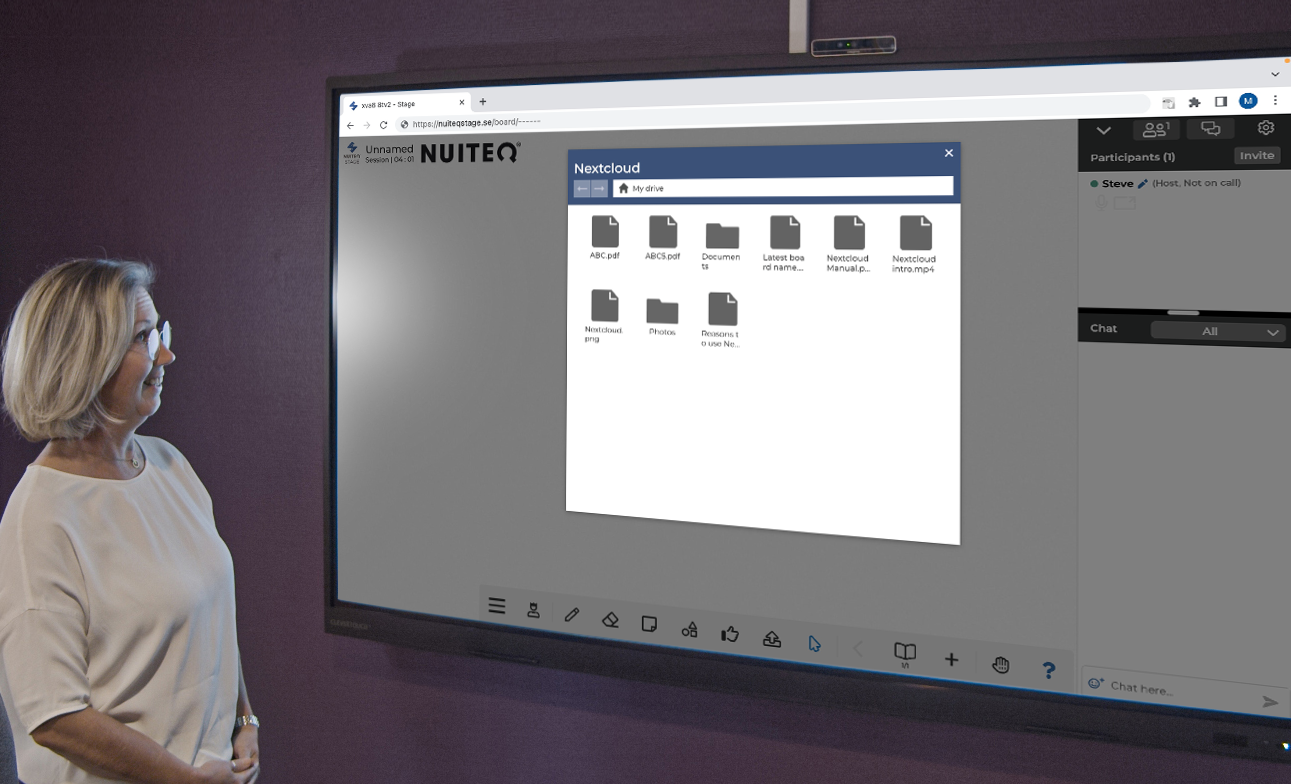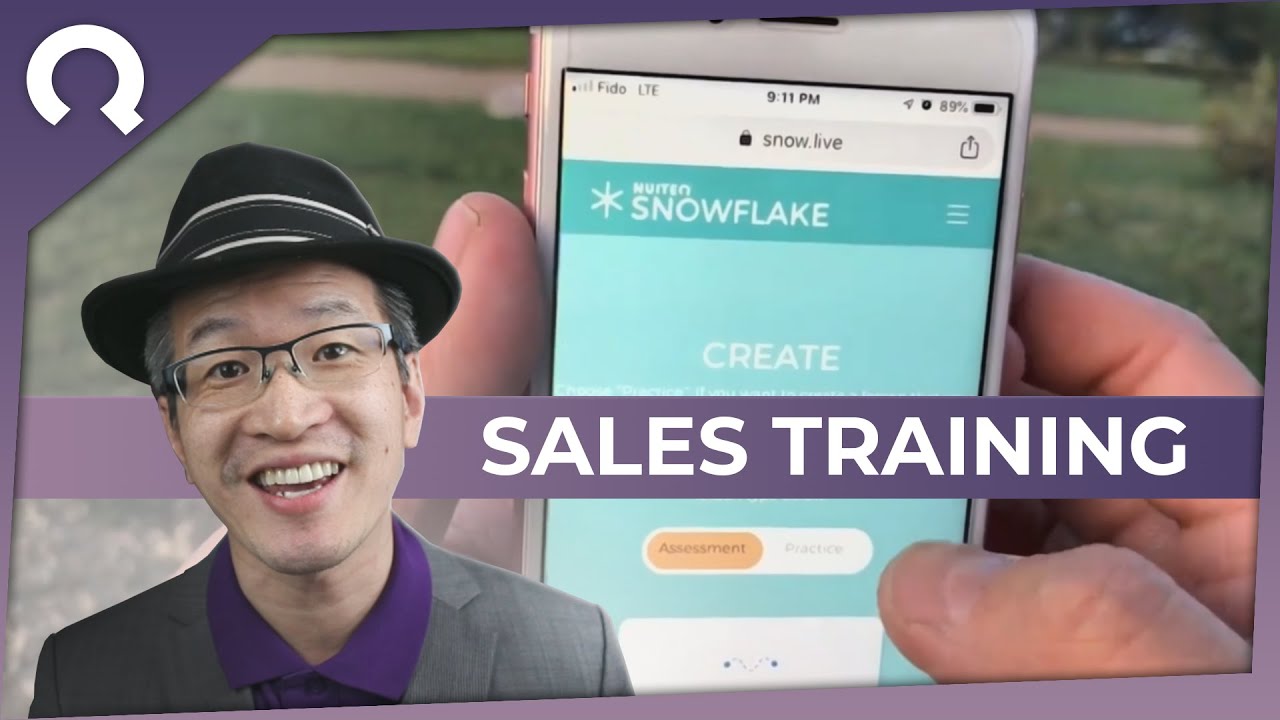If you are an educator or parent of a school-age child, you probably have heard of STEM. STEM stands for Science, Technology, Engineering, and Mathematics. A goal of STEM instruction is to provide students with access to the skills and experiences they will need to prepare for careers and lifestyles of the future, even if they do not choose a STEM-related career.
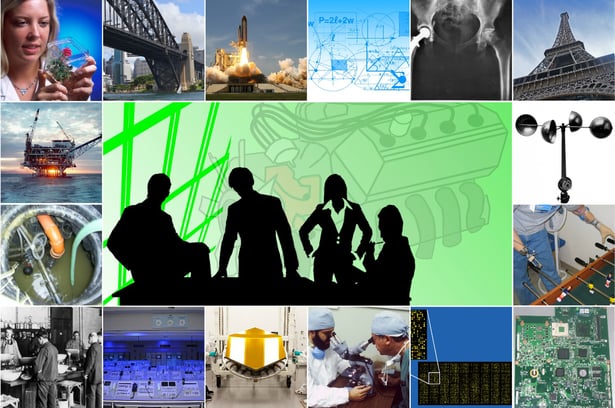
Why the emphasis on STEM?
The explosion of technologies over the past decade has impacted nearly all fields of study, and as a result, nearly every field of work. Traditional approaches to education are not enough to prepare young people for life and work in a highly technological society. It is important for students to have experiences over the duration of their K-12 education that will carry with them as they become adults.
STEM education turns traditional instruction on its head by providing students with collaborative learning experiences and projects that focus on real-world problem solving. Teachers use hands-on activities, simulations, and input from people working in various STEM fields to help bring the subject matter to life for their students.
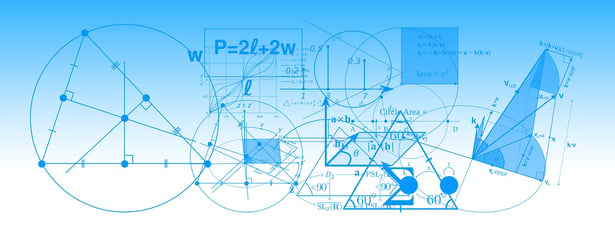
What are the challenges?
In the U.S., the Next Generation Science Standards were developed to ensure that STEM education is emphasized in every elementary classroom, and in every secondary science classroom. Teachers must become knowledgeable about STEM subjects and fields of study in order to effectively guide their students. The roadmap is not yet complete.
Teachers are challenged to take new STEM-related standards and transform them into lessons that will fly with their students. To do this, teachers need to think outside of the box, re-examine their instructional strategies, and take another look at how they integrate technology into the learning experiences they provide for their students.

What works: Collaborative Problem/Project Based Learning
Over the past two decades, researchers have found that in many situations, students demonstrate a higher level of engagement and a deeper understanding and retention of concepts when they participate in collaborative group work. This is an approach that works hand-in-hand with Problem-Based and Project-Based Learning (PBL). Students are active learners with their peers.
Collaborative problem-solving group instructional strategies for STEM subjects are not limited to the K-12 setting. Many universities have moved away from the “Sage on the Stage” model of instruction and have adopted collaborative problem-based group projects as a strategy, with professors playing the role of a facilitator and guide. Students gain skills that will benefit them beyond the classroom walls.
Key Benefits:
- Focus on collaborative group work simulates real-world work environments.
- Opportunities to use “tools of the trade” for hands-on inquiry and experimentation.
- Fosters critical thinking and problem-solving skills.
- Focus on teamwork motivates students to help one-another as they learn and share ideas.
- Exposure and interaction with people in STEM fields who work in teams to solve real-world problems.
- Provides opportunities for students to use technology to brainstorm ideas, gather information, develop research and inquiry skills, and practice positive communication and presentation skills, no matter the subject.

How can teachers better integrate technology to support STEM instruction?
A team approach is best, and adequate time for planning meetings over the school year is essential. The time invested will be worth it in the long run.
As a team, teachers can collaborate for on-going instructional planning and peer-to-peer professional development. Through this format, they can review existing resources available to them at their schools, such as hands-on STEM-related kits, STEM-related software/digital content, and on-line resources. Teachers can share ideas for collaborative problem-based learning projects for their students, and share their reflections about what worked, and why.
Here are just a few examples of ways teachers can integrate technology with STEM education:
- Video interviews with experts in STEM fields, local STEM-related organizations, universities.
- Virtual field trips; student creation of virtual field trips.
- Student capture of photos and video clips for use in projects.
- Data analysis and information visualization.
- Problem-solving projects involving concept-mapping (i.e. Snowflake MultiTeach® Nodes)
- Presentations (i.e. Snowflake MultiTeach® Presenter)
How can Snowflake MultiTeach® be used to support collaborative, problem-based STEM projects?
The Nodes app is a new addition to Snowflake MultiTeach®. It supports concept mapping, brainstorming, and collaborative problem-solving projects, and is especially powerful when used along with other Snowflake MultiTeach® applications and lesson types. The following picture is an example of a problem-based learning project using Nodes:
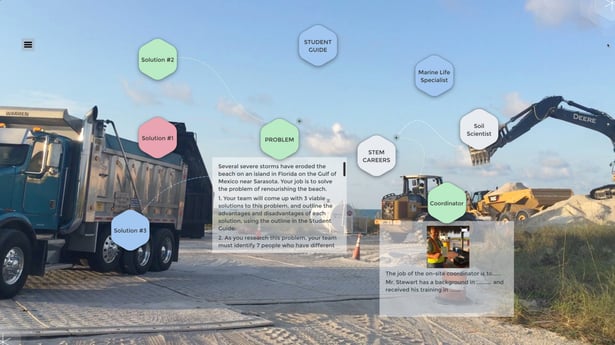
In this project, the students work in a small group and focus on solving the problem of beach erosion after several severe storms. The students are tasked to come up with three viable solutions to the problem, and present the pros and cons of each, within each “solution” node.
During this process, they must identify 7 different STEM related careers/jobs that are required for this project, and research the roles and responsibilities of each. They will also research the education and training needed for each career, and are encouraged to interview people who are specialists in the corresponding fields.
The Student Guide node contains information and tips to help students use Nodes for brainstorming ideas and figuring out a plan of action. The guide also provides “how-to” information and tips about conducting video interviews with people who work in STEM and careers. Information is provided in the guide section to assist students with importing digital content, such as video clips, audio, pictures, and PDF files, as well as how to use various features of the Nodes app for their project.
Additional information about ways the Nodes App can be used by teachers and students can be found in a previous blog post: “How to MultiTeach@: Introduction to Snowflake MultiTeach® Nodes App.”
Looking for more information about STEM and collaborative problem/project based learning and STEM careers? Check out the in-depth references and resources below!
REFERENCES AND RESOURCES
Project-Based Learning Research: An Annotated Bibliography
(Vanessa Vega, Edutopia, 6/14/16)
Problem Based Learning Projects
(New England Board of Higher Education)
Creating Real-World Problem-Based Learning Challenges in Sustainable Technologies to Increase the STEM Pipeline
(New England Board of Higher Education)
A Framework for K-12 Science Education: Practices, Crosscutting Concepts, and Core Ideas
(Next Generation Science Standards)
Integrating Technology with Student-Centered Learning: A Report to the Nellie May Education Foundation
(Babette Moeller & Tim Reitzes, July, 2011)
STEM Students Learn Best in Collaborative Teams
(Anne Jolly, 4/27/13 MiddleWeb)
How STEM Education Improves Student Learning
(Kristy M. Meyric, Meridian K-12 School Computer Technologies Journal, Vol. 14, 1, 2011)
Framework for 21st Century Learning
Next Generation Science Standards
Common Core State Standards and STEM
(Sally Ride Science @ UC San Diego Common Core State Standards Initiative)
Common Core State Standards Initiative
STEM Jobs website
KQED Science- Career Spotlight
Cool Careers in STEM
STEM Career

 3-in-1 Mic
3-in-1 Mic
